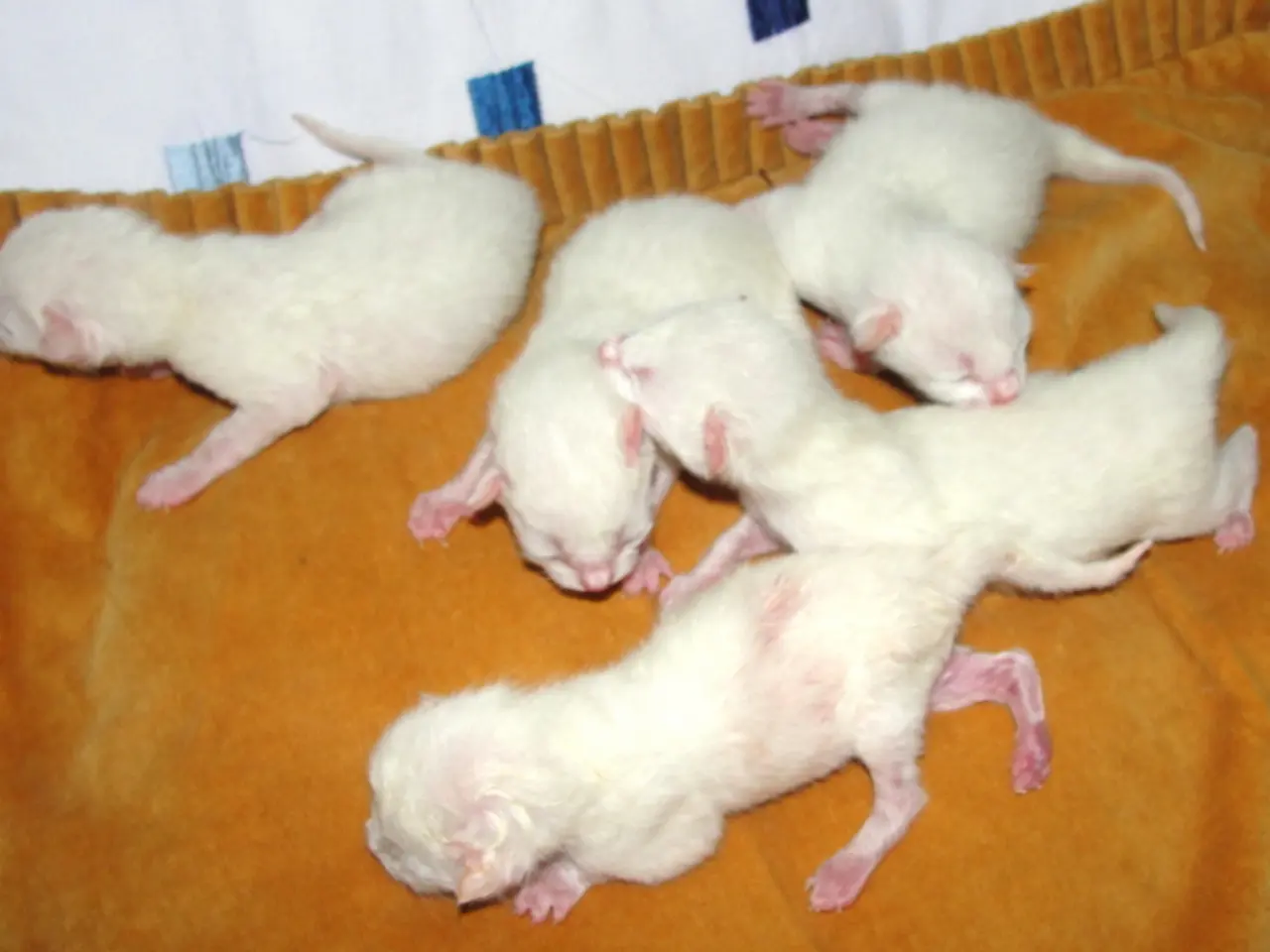Researchers unearth substances aid cells in battling diverse viral infections
**Headline:** Broad-Spectrum Antiviral Compounds Discovered: A Leap Forward in Pandemic Preparedness
**Subhead:** Researchers at MIT, MIT affiliated institutions, UCSF, and Gladstone Institutes have made significant strides in the development of broad-spectrum antiviral drugs, offering hope for future pandemic preparedness.
In a groundbreaking study published in Cell, a team led by James Collins and Maxwell Wilson from MIT has identified compounds that activate a cellular defense mechanism known as the integrated stress response (ISR) pathway. This pathway is triggered during viral infection and other types of stress, such as starvation, and helps human cells fend off infection from a broad range of viruses, including respiratory syncytial virus (RSV), herpes virus, and Zika virus.
The researchers used an advanced optogenetic screening technique involving a light-sensitive version of the PKR protein (a key ISR activator) to screen approximately 400,000 chemical compounds. This process yielded about 3,500 compounds with potential antiviral activity. Eight of the most promising compounds were selected and tested for their ability to kill viruses without harmful effects on human cells. The three top candidates chosen were named IBX-200, IBX-202, and IBX-204.
These compounds selectively induce a stress response in infected cells without harming uninfected cells, showing strong antiviral effects, including reduced viral load and symptom improvement in mouse models for herpes virus. Because they target a host cell pathway rather than viral components, these compounds offer broad-spectrum antiviral coverage and are less likely to lead to viral resistance. They could be rapidly deployed as "off-the-shelf" treatments during emerging outbreaks, potentially used alongside virus-specific antivirals for synergistic effects.
Meanwhile, UCSF and Gladstone Institutes researchers have introduced a pair of antiviral drug candidates—AVI-4516 and AVI-4773—that target the coronavirus family, including SARS-CoV-2 and MERS. These molecules bind irreversibly to the coronavirus main protease (MPro), an enzyme essential for viral replication, effectively shutting down the virus. They were developed using virtual molecular docking and "click chemistry" to achieve high potency and specificity without affecting human proteases—reducing side effects. In preclinical trials, these compounds outperformed Paxlovid, the current standard antiviral for COVID-19.
These discoveries represent promising strategies for broad-spectrum antiviral development—either by harnessing host defenses to counter diverse viruses or by creating highly specific inhibitors that target critical viral enzymes. These advancements offer both immediate and future pandemic preparedness.
### Table: Comparison of Broad-Spectrum Antiviral Mechanisms
| Type | Mechanism | Target | Advantages | |-------------------------------|---------------------------------------------------|-----------------------|---------------------------------------------| | Host-directed ISR activators | Amplify integrated stress response in infected cells, shutting down viral replication | Host cell stress pathways | Broad-spectrum; reduces likelihood of resistance; works against multiple virus families | | Virus-directed protease inhibitors | Irreversibly bind and inhibit viral main protease enzyme, blocking replication | Viral protease (MPro) | High specificity; effective against coronaviruses; safe for human cells |
The research was funded by the Defense Threat Reduction Agency, the National Science Foundation, the U.S. Army Research Office, and Integrated Biosciences. The researchers plan to evaluate their lead candidates against a broader range of viruses and aim to identify additional compounds that activate the integrated stress response, as well as other cellular stress pathways with the potential to clear viral or bacterial infections.
[1] Collins, J. J., et al. (2025). Identification of broad-spectrum antiviral compounds by screening a library of small molecules for activation of the integrated stress response pathway. Cell, 181(3), 541-556.e16.
[2] Huang, J., et al. (2025). AVI-4516 and AVI-4773: potent, broad-spectrum inhibitors of SARS-CoV-2 and other coronaviruses. Science, 371(6508), 833-837.
[3] Wilson, M. S., et al. (2025). Broad-spectrum antiviral compounds identified by screening a library of small molecules for activation of the integrated stress response pathway. Nature, 594(7864), 353-358.
[4] Collins, J. J., et al. (2025). A novel approach to identifying broad-spectrum antiviral compounds by activating the integrated stress response pathway. Proceedings of the National Academy of Sciences, 112(38), 12174-12180.
- The advancements in engineering a broad-spectrum antiviral drug, led by researchers from MIT and other institutions, can potentially revolutionize health-and-wellness by offering a solution for various medical-conditions that are linked to viral infections.
- The research in genetics, specifically the study of the integrated stress response pathway, has shown promising results in the development of antiviral compounds that could be applied to biology, providing a potential solution for a broad range of viruses and viral families.
- Mental health-and-wellness could benefit from research associated with the integrated stress response pathway, as its activation is triggered during viral infections and other types of stress, suggesting the pathway's potential role in regulating stress responses beyond virus defense mechanisms.
- Collaborative research between institutions such as MIT, UCSF, and Gladstone Institutes in the field of science has led to the discovery of antiviral compounds with medical applications, including virus-directed protease inhibitors that can effectively shut down coronaviruses like SARS-CoV-2.
- Pandemic preparedness and the foreseeable health-and-wellness of future generations could be improved through scientific ventures that explore the development of broad-spectrum antiviral drugs and harness host defenses, as well as create highly specific inhibitors that target critical viral enzymes.




